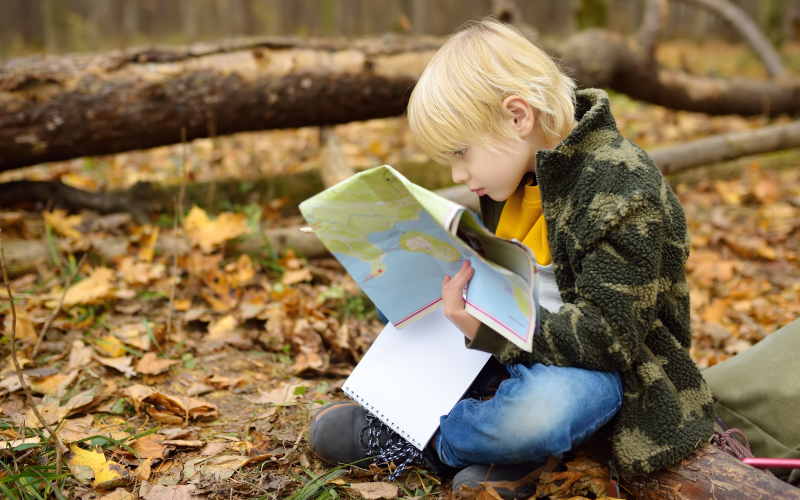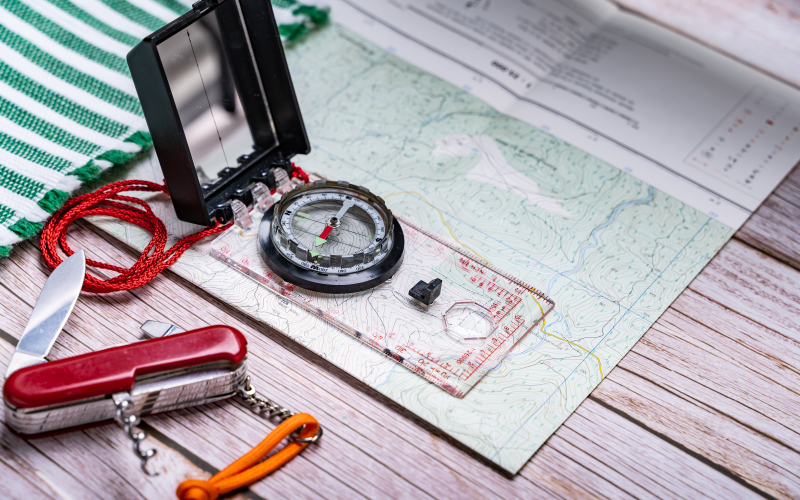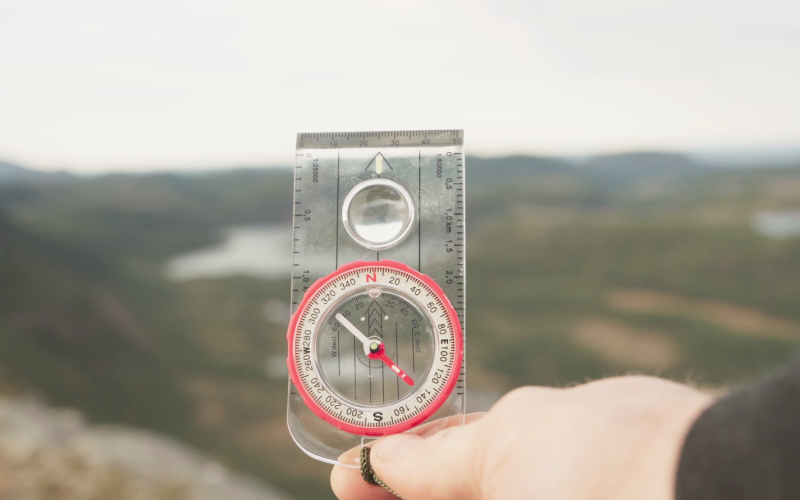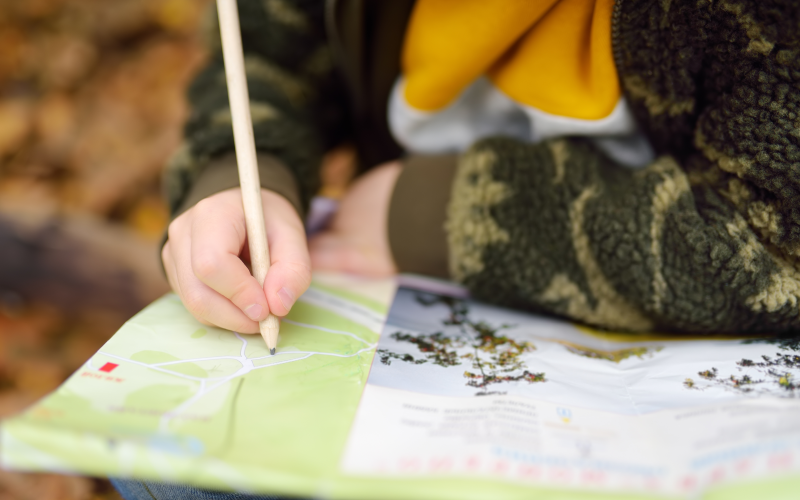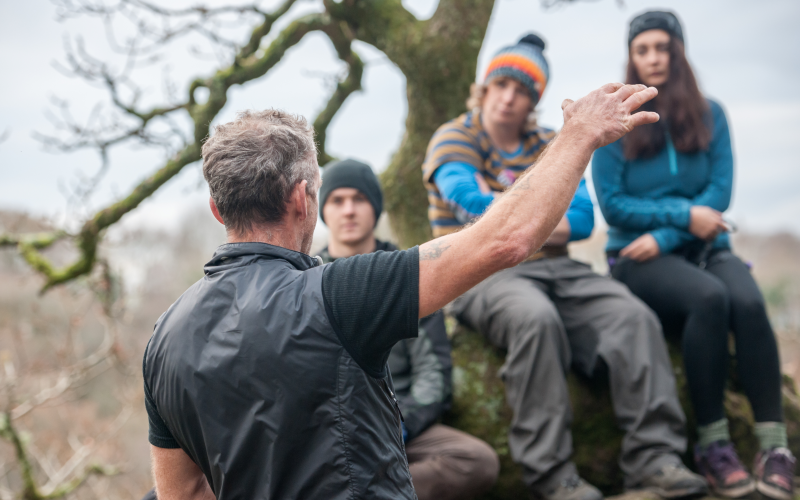3. Lesson Breakdown
3.1 Understanding the Compass (15 Minutes)
Identify the Parts of the Compass
- Compass Needle: The red end points to
magnetic north.
- Base Plate: The flat, rectangular part you
hold.
- Direction of Travel Arrow: The arrow that
shows which way you should walk.
- Rotating Bezel (or Dial): The ring around
the compass you turn to set your course.
How a Compass Works
The Earth has a magnetic field, and the red end of the compass
needle aligns with magnetic north. By rotating the bezel and lining it
up with that needle, you can determine which direction to travel.
3.2 Basic Map Reading Skills (15 Minutes)
Understanding Map Symbols
- Paths and trails are often shown as thin lines or dashed
lines.
- Rivers and streams are usually shown in blue.
- Woodland or forested areas are often represented by green
shading or tree symbols.
- Roads may be displayed in different colours or thicknesses
depending on the road type.
Orienting the Map
- Orient the map by matching the top of the map (usually
north) with the actual north around you.
- Use landmarks by comparing what's on your map (roads,
rivers, or hills) with what you see around you in real life.
3.3 Combining Map and Compass (20 Minutes)
Setting a Course
- Place the compass on the map so the edge of the base plate
lines up with your starting point and destination.
- Ensure the direction of travel arrow points from where you
are to where you want to go.
Aligning the Bezel
- Rotate the bezel until the compass's orienting lines inside
the housing are parallel with the map's north-south grid lines.
- Ensure the orienting arrow on the compass points north on
the map.
Taking a Bearing
- Hold the compass flat and at waist level.
- Turn your body until the red end of the needle aligns with
the orienting arrow on the bezel.
- The direction of travel arrow now shows the exact heading
you need to follow on the ground.
3.4 Practical Exercise (30 Minutes)
Treasure Hunt
Setup: Choose a simple route or create a few
checkpoints. Mark these spots on the map with small 'treasures'
(stickers, sweets, or trinkets).
How to Play:
- Give each participant their own map and compass.
- Have them set a bearing from one checkpoint to the next.
- Let them navigate to find the hidden treasures.
Goal: Encourage participants to practise
aligning the map, setting bearings, and walking in the correct
direction. It's a fun way to turn learning into an adventure.


